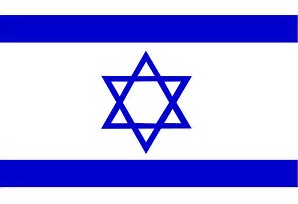Summary of August 25 Presentation on….
Israel Under Constant Siege
The Israeli Strategy for Defeating Its Regional Adversaries
with
COLONEL ELAM KOTT
(Colonel, Israeli Defense Forces, Ret)
NSF attendees were treated to an incisive and thorough analysis of the regional landscape in the Middle East as seen from Israel. Retired Colonel Elam Kott, who served with the Israeli Defense Forces (IDF) for over 30 years, highlighted the major aspects of the strategic environment Israel faces.
With respect to regional challenges, Kott stressed:
- That extreme, violent, and well-armed substate actors have replaced neighboring state armies as Israel’s main military threat; these include Hezbollah in Lebanon/Syria and Hamas in Gaza (nonstate jihadist elements are also accumulating on Israel’s borders, but for now they do not pose the same level of threat).
- These actors can now target Israel’s civilian population centers and vital strategic facilities with significant firepower, potentially affecting the country’s survivability.
- These substate actors are operating from civilian areas in a bid to deny Israel freedom of action or undercut the legitimacy of its war effort. Some substate actors “supported by Iran” have access to Iranian resources unfrozen by the nuclear deal.
- Iran plays a key role in Israeli defense planning. While the IDF does not expect the nuclear threat to come to fruition during the next five-year plan’s timeframe, it does call for enhancing deterrence and maintaining preparedness for potential preemptive strikes against “countries with no joint border with Israel.”
With respect to Responding to the Challenges, Kott said:
- The IDF identifies three basic situations for the use of force — Routine, Emergency, and (full-scale) War — distinguishable from one another. In the latter situation, the IDF could be directed to achieve “a military decision, especially by destroying significant enemy capabilities, or to conduct a limited campaign focusing on strategic targets.”
- Deterrence is key, defined in terms “relative to the nature and diversity of the threat”. The IDF developed the concept of a “campaign between wars”. Early warning is now an element of intelligence superiority, which is to be achieved before and during any armed conflict.
- A “defense pillar” has been added to address the significant threat of enemy fire on Israel’s heartland.
- Cyberspace is another front, for which a Cyber Arm is being established.
Further observations Kott made on the strategic environment:
- Israel faces extremely complex challenges in a fast-transforming landscape, posing acute strategic, operational, and domestic dilemmas. These challenges are epitomized by Iranian-supported Hezbollah, with its arsenal of over 100,000 rockets and its capacity to fire over 1,500 daily for weeks. Israel prepares for the “consequences of a nuclear deal” that could compound existing uncertainties and threats from Iran’s proxies.
- The Syrian army has been wiped from the map of threats for at least the next decade, and Israel enjoys strategic cooperation with Egypt and Jordan. What is left is Iran, with its strategic “terror arms” in the area, i.e., Hezbollah and Hamas, and the Sunni jihad organizations .
- ISIS: ISIS is primarily successful where there is a political void. Although the offensives in Syria and Iraq showed the Islamic State’s tactical capabilities, they were directed against failed states with weakened militaries.
- The difference between a real army and the forces in Syria and Iraq that ISIS has encountered should be recognized. Generally, non-state actors are less dangerous than states. Only states can develop nuclear weapons. Non-state actors usually do not possess airplanes, heavy artillery and tanks that can cause great damage. Since they are Iranian proxies, Hizballah and Hamas are not an exception to this rule because they have been endowed with destructive capabilities, such as missiles, by a state.
- ISIS might eventually carve an area of control along Israel’s borders, particularly on the Golan where the Syrian state is disintegrating. In a worst case analysis, Syria could yet become another “Hamastan.” But it is important to note that Israel has been successful in containing Hamas in Gaza. Due to less global support for ISIS than for Gazans, Israel’s freedom of action against ISIS is obviously much greater.
- However, ISIS also knows that if it makes such an attempt, at least from Syria, the Israel Air Force will respond with greater force than that used in the surgical strikes carried out by the US and the other members of the coalition.
The Q&A period was “off the record”, which permitted a more robust and candid exchange of opinions.
- Colonel Kott was asked to rank the states surrounding Israel, in terms of which represented the greatest concern or threat, and which substate actors were considered the most serious.
- He was asked about contacts between Egypt and Israel (extensive), as well as Saudi Arabia;
- Lott discussed the hostile relationship with Iran and its Shia proxies in the region, including Syria and Hezbollah; he was asked to reflect on the possibility of Syrian President Assad falling from power and what that would mean for Israel;
- The Colonel responded to questions regarding U.S. aid to Israel, including advanced defensive weaponry such as the Iron Dome anti-missile system
- He described the current political balance in Israel, with Netanyahu’s Likud party holding on to a narrow majority, albeit with the help of minor parties; and he discussed the controversial appointment of Liberman as Defense Minister.
Colonel Kott addressed Israel’s strategic concept for the conduct of war against a notional adversary in the region, be that a state like Iran or sub-state adversaries such as ISIS, Hamas and Hezbollah.
In sum, a very candid and informative session! We definitely hope to have Colonel Elam Kott back soon to address the Forum again.


